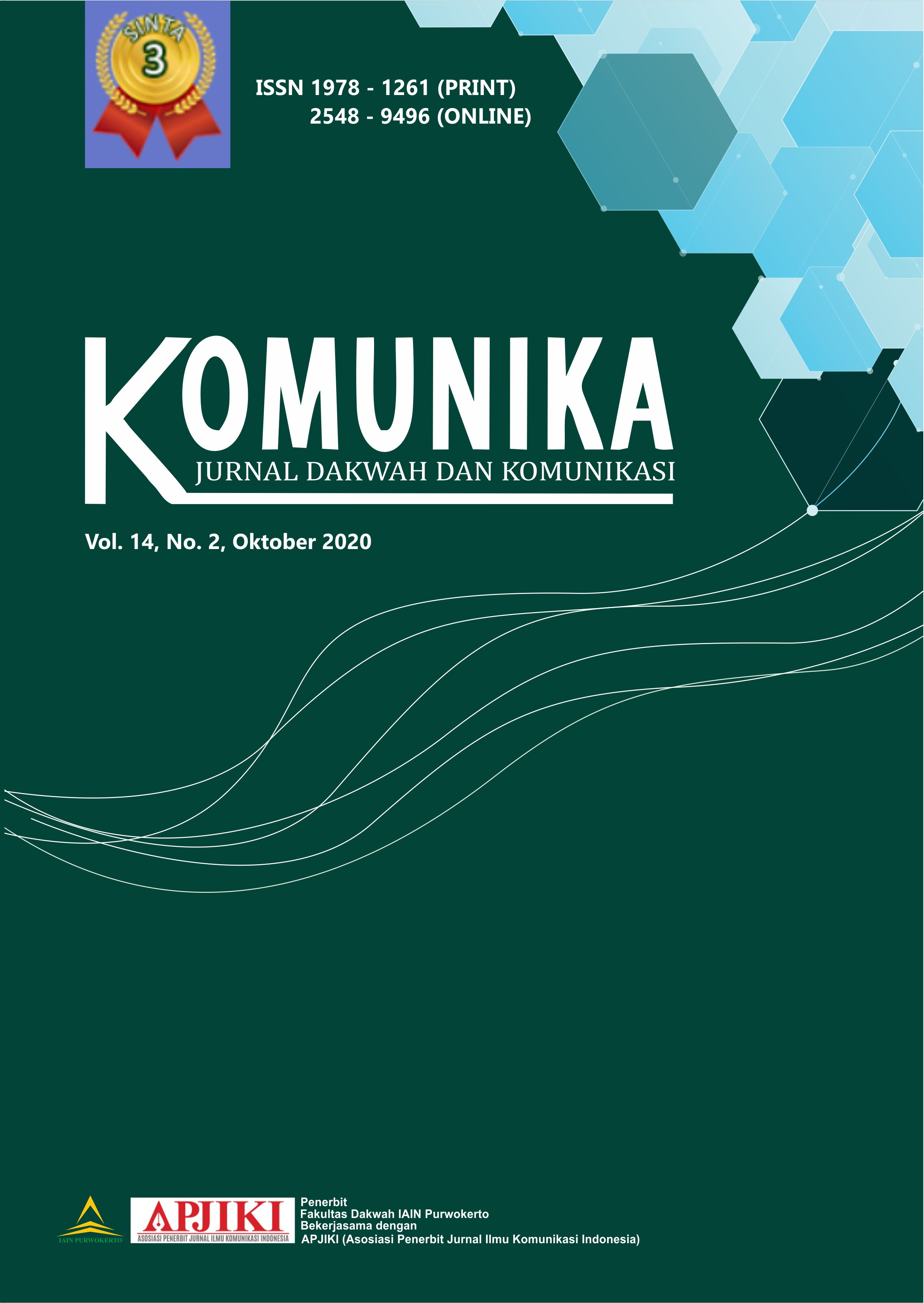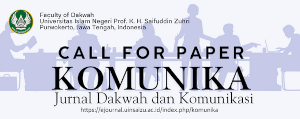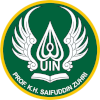The The Use of WhatsApp Group to Maintain Intercultural Friendship
DOI:
https://doi.org/10.24090/komunika.v14i2.4030Keywords:
Social media, WhatsApp Group, intercultural friendshipAbstract
This research aims to analyze the use of WhatsApp Group (WAG) as a medium for maintaining intercultural friendship among people with different cultural backgrounds namely the alumni of The Ship for Southeast Asian and Japanese Youth Program (SSEAYP) batch ‘89. This research used a case study approach with a qualitative research design. The data were collected through direct observation of the texts, pictures, emoticons, and videos shared in the WAG and interviews with 20 informants who are the members of the group coming from different countries. The Needs Hierarchy Theory of Maslow and the Social Exchange Theory of Thibaut and Kelley were used in this research. The findings show that the alumni of SSEAYP Batch ’89 joined the WAG to maintain intercultural friendship among them by exchanging information about their and their families’ conditions; expressing birthday wishes; congratulating each other’s achievements of studies or works; congratulating religious celebrations; fundraising for certain events; and coordinating reunions. To maintain their friendship, the WAG members implicitly agreed to an unwritten rule that they must respect each other, be tolerant, and be open-minded. They also agreed that topics related to politics and religion are not allowed to be posted and discussed in the group, except for greetings on religious occasions. In addition, humor that causes unnecessary laughter and pictures and videos that tend to be pornographic or demeaning to women should not be posted in the group. The discussion about football also should not be too deep to avoid fanaticism with certain teams or players which might result in division or enmity between the group members.Downloads
Download data is not yet available.
References
Akram, W., & Kumar, R. (2017). A Study on Positive and Negative Effects of Social Media on Society. International Journal of Computer Science and Engineering, 5(10).
Aruma, D. E. O., & Hanachor, D. M. E. (2017). Abraham Maslow’s Hierarchy of Needs and Assessment of Needs in Community Development. International Journal of Development and Economic Sustainability, 5(7), 15–27.
Baruah, T. D. (2012). Effectiveness of Social Media as a tool of communication and its potential for technology enabled connections: A micro-level study. International Journal of Scientific and Research Publications, 2(5), 1.
Boyd, D. (2009). “Social Media is Here to Stay... Now What?â€
Church, K., & de Oliveira, R. (2013). What’s up with whatsapp?: Comparing mobile instant messaging behaviors with traditional SMS. In Proceedings of the 15th International Conference on Human-Computer Interaction with Mobile Devices and Services, 352–361.
Hybels, S., & Weaver, R. (2009). Communicating Effectively. New York: McGraw-Hill Companies.
Karapanos, E., Teixeira, P., & Gouveia, R. (2016). Need fulfillment and experiences on social media: A case on Facebook and WhatsApp. Computers in Human Behavior, 55, 888–897.
Liliweri, A. (2013). Dasar-Dasar Komunikasi Antarbudaya. Yogyakarta: Pustaka Pelajar.
Malka, V., Ariel, Y., & Avidar, R. (2015). Fighting, worrying and sharing: Operation “Protective Edge†as the first WhatsApp war. Media, War and Conflict. https://doi.org/10.1177/1750635215611610
Mulyana, D. (2011). Komunikasi Antar Budaya Panduan Berkomunikasi dengan Orang-orang Berbeda Budaya. Bandung: Remaja Rosdakarya).
Mulyana, D. (2013). Metodologi Penelitian Kualitatif. Bandung: PT Remaja Rosdakarya.
Nasrullah, R. (2018). Media Sosial, Perspektif Komunikasi, Budaya, dan Sosioteknologi. Bandung: PT. Remaja Rosdakarya.
Ruben, B. A., & Stewart, L. P. (2013). Komunikasi dan Perilaku Manusia (Terjemahan),. Jakarta: Raja Grafindo Persada.
Schwartz, J. (2016). The Most Popular Messaging App in Every Country.
Shahid, S. (2018). Content Analysis of Whatsapp Conversations: An Analytical Study to Evaluate the Effectiveness of Whatsapp Application in Karachi. International Journal of Media, Journalism and Mass Communications (IJMJMC), 4(1), 14–26.
Shahsavarani, A. M., Heyrati, H., Mohammadi, M., Jahansouz, S., Saffarzadeh, A., & Sattari, K. (2016). Social Exchange Theory and Attachment Theory : Combination of Sociological and Psychological approaches to form a biopsychosocial viewpoint to human social and interpersonal relationships. Internation Journal of Humanities and Cultural Studies, 1(Special Issue).
SII. (2016). The Ship for Southeast Asian Youth Program (SSEAYP).
Tubbs, S., & Moss, S. (2008). Human Communication, (11th Editi). New York: McGraw-Hill Companies.
Wood, J. T. (2004). Communication Theories in Action (3rd ed.). Canada: Wadsworth Cengage Learning.
Yin, R. K. (2008). Case Study Research: Design and Methods (Applied Social Research Methods). Illinois: Sage Publications, Inc.
Zaw, H. T. (2018). The Impact of Social Media on Cultural Adaptation Process: Study on Chinese Government Scholarship Students. Advances in Journalism and Communication, 6(33). https://doi.org/10.4236/ajc.2018.63007
Aruma, D. E. O., & Hanachor, D. M. E. (2017). Abraham Maslow’s Hierarchy of Needs and Assessment of Needs in Community Development. International Journal of Development and Economic Sustainability, 5(7), 15–27.
Baruah, T. D. (2012). Effectiveness of Social Media as a tool of communication and its potential for technology enabled connections: A micro-level study. International Journal of Scientific and Research Publications, 2(5), 1.
Boyd, D. (2009). “Social Media is Here to Stay... Now What?â€
Church, K., & de Oliveira, R. (2013). What’s up with whatsapp?: Comparing mobile instant messaging behaviors with traditional SMS. In Proceedings of the 15th International Conference on Human-Computer Interaction with Mobile Devices and Services, 352–361.
Hybels, S., & Weaver, R. (2009). Communicating Effectively. New York: McGraw-Hill Companies.
Karapanos, E., Teixeira, P., & Gouveia, R. (2016). Need fulfillment and experiences on social media: A case on Facebook and WhatsApp. Computers in Human Behavior, 55, 888–897.
Liliweri, A. (2013). Dasar-Dasar Komunikasi Antarbudaya. Yogyakarta: Pustaka Pelajar.
Malka, V., Ariel, Y., & Avidar, R. (2015). Fighting, worrying and sharing: Operation “Protective Edge†as the first WhatsApp war. Media, War and Conflict. https://doi.org/10.1177/1750635215611610
Mulyana, D. (2011). Komunikasi Antar Budaya Panduan Berkomunikasi dengan Orang-orang Berbeda Budaya. Bandung: Remaja Rosdakarya).
Mulyana, D. (2013). Metodologi Penelitian Kualitatif. Bandung: PT Remaja Rosdakarya.
Nasrullah, R. (2018). Media Sosial, Perspektif Komunikasi, Budaya, dan Sosioteknologi. Bandung: PT. Remaja Rosdakarya.
Ruben, B. A., & Stewart, L. P. (2013). Komunikasi dan Perilaku Manusia (Terjemahan),. Jakarta: Raja Grafindo Persada.
Schwartz, J. (2016). The Most Popular Messaging App in Every Country.
Shahid, S. (2018). Content Analysis of Whatsapp Conversations: An Analytical Study to Evaluate the Effectiveness of Whatsapp Application in Karachi. International Journal of Media, Journalism and Mass Communications (IJMJMC), 4(1), 14–26.
Shahsavarani, A. M., Heyrati, H., Mohammadi, M., Jahansouz, S., Saffarzadeh, A., & Sattari, K. (2016). Social Exchange Theory and Attachment Theory : Combination of Sociological and Psychological approaches to form a biopsychosocial viewpoint to human social and interpersonal relationships. Internation Journal of Humanities and Cultural Studies, 1(Special Issue).
SII. (2016). The Ship for Southeast Asian Youth Program (SSEAYP).
Tubbs, S., & Moss, S. (2008). Human Communication, (11th Editi). New York: McGraw-Hill Companies.
Wood, J. T. (2004). Communication Theories in Action (3rd ed.). Canada: Wadsworth Cengage Learning.
Yin, R. K. (2008). Case Study Research: Design and Methods (Applied Social Research Methods). Illinois: Sage Publications, Inc.
Zaw, H. T. (2018). The Impact of Social Media on Cultural Adaptation Process: Study on Chinese Government Scholarship Students. Advances in Journalism and Communication, 6(33). https://doi.org/10.4236/ajc.2018.63007
Downloads
Published
2020-10-01
Issue
Section
Articles
License
Authors who publish with this journal agree to the following terms:
- Authors retain copyright and grant the journal right of first publication with the work simultaneously licensed under a Creative Commons Attribution-ShareAlike 4.0 International License that allows others to share the work with an acknowledgement of the work's authorship and initial publication in this journal.
- Authors are able to enter into separate, additional contractual arrangements for the non-exclusive distribution of the journal's published version of the work (e.g., post it to an institutional repository or publish it in a book), with an acknowledgement of its initial publication in this journal.
- Authors are permitted and encouraged to post their work online (e.g., in institutional repositories or on their website) prior to and during the submission process, as it can lead to productive exchanges, as well as earlier and greater citation of published work (See The Effect of Open Access).

























